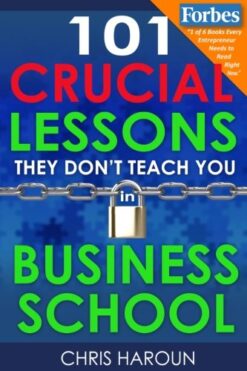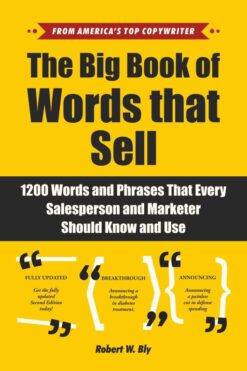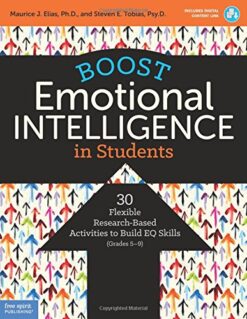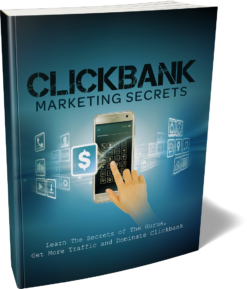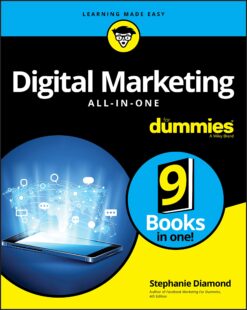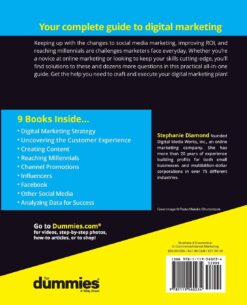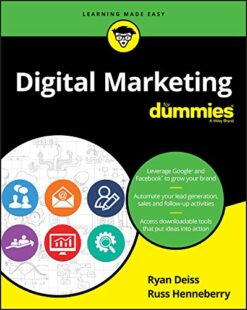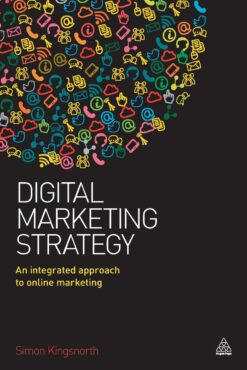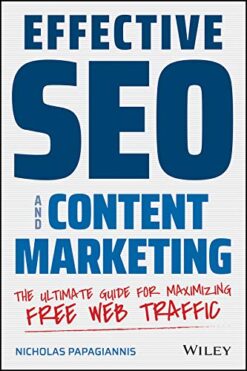Now is always a good time to think about your marketing reading list. Reading one of the best marketing books listed below is likely to change and improve the way you market. While there are many classic marketing books that could make a best-books list, the recommended reading list below focuses only on marketing books published within the last 5 years.
Serious marketers should read the equivalent of 10 or more educational and industry books per year (2500 pages) to maintain and expand skills and knowledge. Below are our suggestions for the must-read best marketing books this year.
Great marketing books for this year
From new takes on influence to effective multi-channel marketing and to writing and content to AI, these marketing must-reads are likely to boost your marketing results in 2019.
Here is a free bonus read: A New Era of Content. Learn how to create content that performs and drives better results online with four proven steps to content marketing. Also see our list of best digital marketing books.
This Is Marketing: You Can’t Be Seen Until You Learn to See By Seth Godin, 2018
What we make is not for everyone. Recognising that is the foundation of better marketing.Marketers make change by creating tension which leads to new choices. Those are some of the central premises of the book.
He points out that marketers’ job is to pick a story and repeat it and stick with long after we marketers become tired of it. He reminds us that over-reliance on ad spending is for lazy marketers. He disembowels marketers who cut price and race to the bottom as the laziest. “Low price is the last refuge of a marketer who has run out of generous ideas.” Or maybe never had any to begin with.
This Is Marketing lacks structure and meanders some, but it is a useful work about value, emotional connection, empathy, trust, generosity, and respect and is part of the strong movement since around 2012 towards customer-centric marketing.
Hacking Growth: How Today’s Fastest-Growing Companies Drive Breakout Success By Sean Ellis and Morgan Brown, 2017
Most marketing books are old wine in clever new bottles, but about once or twice a year I come across a book that is completely new wine. Hacking Growth is that wine, er, book and my top pick for 2019. Ellis named and started the growth hacker movement in 2010 after his successes at Dropbox and Logmein.
The book is a how-to guide on running a growth program in your company. If you are in digital marketing and not evolving toward growth and away from channels and marketing activity, you are in danger of being left behind.
He explains the organisational structure for growth (it’s not at all obvious), covers product definition and testing, surveys, growth levers, testing at high tempo, cohort tracking, aha moment, and hacking: acquisition, activation, retention, and monetization.
Some insights and quotes: “Ideas are the rocket fuel of growth. The best way to have a good idea is to have a lot of ideas. Run at least three experiments a week. Startup engineering teams should spend 1/3 of their time getting the new user experience right.”
Epic, breakout book. Highly recommended.
Play Bigger: Create New Categories and Dominate Markets By Maney et al, 2016
Serious marketing executives need to be familiar with this book. In it the authors describe the process of category creation and how to become a category king. They cover how to discover a category, the power of a point of view, creating a flywheel, continuous category creation and how to overcome the innovator’s dilemma, and finish with category definition and creation for your career.
“Category is strategy. You create a category to plug into when you define a new way to solve a problem or define a new problem that people did not know they had.”
After identifying a category based on a clear need, marketers must create a point of view to educate the market and deploy it in what they call a lightning strike to make a big splash that gets catalysed with PR and word of mouth. Though marketing plays a big role, category creation has to be embraced by the whole company from the CEO down to have a chance.
Data-Driven Marketing with Artificial Intelligence: Harness the Power of Predictive Marketing and Machine Learning by Magnus Unemyr, 2018
The author says he was looking for a book that introduced and explained the martech companies and products that are using AI to help us do our jobs, and he could not find one, so he wrote this one. He identified the top two dozen products and interviewed each company to populate the first section of the book. He groups the products into the following sections: Competitive Intelligence, Predictive Pricing, Ads Strategy, E-commerce, Content Marketing, Lead and Customer Acquisition, Customer Relationships, Segmentation, and Customer Journey. That makes it a very helpful road map to evaluating and adopting AI solutions.
The second section explains how to build your own AI solution and what the key technical terms mean. This section is better for product leaders and engineers, but is interesting if you want to better understand machine learnings, AI algorithms, neural networks, and statistical clustering.
He ends by commenting on whether to fear AI, and like most thought leaders and commentators on the subject he is optimistic that AI will help us ask better questions and develop better solutions to tomorrow’s problems.
Building a Story Brand: Clarify Your Message So Customers Will Listen by Donald Miller, 2017
Storytelling is the focus of so many marketing books and assets in recent years that it is impossible to ignore; it’s like a tidal wave washing over drab beaches cluttered with pale, self-promoting, feature-based marketing.
Miller takes a topic that seems kind of obvious and adds his proven 7-step Story Brand framework. He analyses the structure of good story similarly to Nancy Duarte in Resonate: character, problem, meets a guide, gets a plan, drives to action, avoids failure, and ends with a success. Where Miller exceeds Duarte is that he directly applies the storytelling structure to business cases that resonate with marketers like me and you.
Download a free site style guide checklist to help you communicate your message to more customers.
One of the measures of a book’s value to me is how many points I mark up as I read, and I did that 70 times in 210 pages. Here are just a few:
“If you confuse, you’ll lose.” The enemy of good marketing is noise. (corporate speak) “Story is the greatest weapon we have against noise because it organizes information in such a way that people are compelled to listen. Story makes music out of noise.” “The customer is your hero, not your brand or product.” The brand should be positioned as the guide to the hero. “The guide, not the hero, is the one with the most authority.”
As you can see, the ideas are familiar, but the context and insights are fresh and compelling. Miller explains how the Story Brand framework will also help with staff recruiting and managing corporate identity and culture. Miller also includes useful templates and instructions. I highly recommend this book.
Marketing: A Love Story, How to Matter to Your Customers by Bernadette Jiwa, 2014
Don’t be deterred by the “love” in the title; instead focus on the ultra-compelling subtitle “How to Matter to Your Customers.” Mattering to your customer requires emotional connection.
The book will apply for entrepreneurs, B2B, and B2C marketers.
If you have been unsure about how to introduce emotion into your sales or marketing communication, this book will give you more insight, ideas, and inspiration than any other book out there. She claims you don’t sell a product, you sell a story and doing so requires both facts and feelings.
Here are some examples from the book: “One of the biggest challenges an entrepreneur or innovator has is understanding how to make his ideas resonate. We tend to have no shortage of ideas, but we struggle to tell the story of how they are going to be useful in the world and why it will matter to people.”
“The smart brands of the new millennium have thrived on this notion of building for belonging….It’s more important to create deeper connections to the right people to make your business sustainable.”
“All the marketing tactics in the world won’t save us from our own indifference [to the customers we acquire].”
“Marketing is not a department; it’s the story of how you create difference for your customers. Marketing is about becoming part of people’s stories.”
Download a Content Funnel Mapping Checklist to help you deliver your message to your prospects and customers.
Like Simon Sinek, Jiwa brings up Why questions frequently. Why is an important question that marketers fail to ask often enough. This was my top pick from last year. Highly recommended.
The New Rules of Marketing and PR: How to Use Social Media and Viral Marketing to Reach Buyers Directly by David Scott, 2017
The rules of digital marketing are constantly changing. Using case studies and real-life examples, Scott explores the latest best practices that lead to marketing success.
The book is a good introduction to the role of social media marketing and PR. The first part is an argument why organisations, especially smaller businesses and nonprofits, should emphasise social media and how the efficient use of social media depends on a different way of thinking compared to traditional media. The second part discusses the different tools of social media and how they could be used to support marketing and PR. He goes on to define niche and mission, providing information and targeted content, thinking about virtual audience, and dialogue with members and related organisations. He covers the implications for web site content as well. See how to maximise the SEO value of press releases with this checklist.
Scott’s essential message is that you can now bypass the traditional marketing channels and reach out directly to customers, provided you have a worthwhile offering and message. To do this, you must philosophically move from monologue to dialogue and from propaganda to participation. These necessary changes in marketing approach are the result of the Internet’s expansion of communication channels from one-to-many . . . to many-to-one . . . to many-to-many . . . to one-to-one. These four communication modalities combined with the ability to bypass land-based distribution channels and transact commerce online represents a sea change in marketing.
Don’t Make Me Think Revisited: A Common Sense Approach to Web Usability By Steve Krug, 2014
Krug published the first edition in 2000, and the book has been the bible of user experience since the early 2000s. Web sites are the primary interface between most businesses and their customers. So all the great marketing campaigns in the world won’t work well unless the site is effective at handling the customers marketing brings to it.
The title is the recurring theme of the book: customers should not have to figure out or interpret your site, it should just work the way they expect. He adds his web facts of life to guide us: #1 We don’t read pages. We scan them. #2 We don’t make optimal choices. We satisfice them. #3 We don’t figure out how things work. We muddle through. For the most part, be conventional and don’t try to reinvent the wheel each update or release.
Download a free site style guide checklist to help you communicate your message to more customers.
The book is shortish at 191 pages and uses the principles he recommends. It is colourful, uses high-contrast layout, and is very skimmable with clear headlines and subheads. Every marketer with a web site needs to read this book periodically.
PRE-SUASION: A Revolutionary Way to Influence and Persuade by Robert Cialdini, 2016
Cialdini wrote the seminal work on Influence in 1984; Pre-Suasion is the long-awaited sequel, and it delivers. Both books belong on a marketer’s bookshelf because marketers work to influence people to take particular actions.
In Pre-Suasion Cialdini goes deeper into the subtleties of persuasion, covering privileged moments, attention and importance, focus and causality, identity, place, crowds, and shared action. The book seemed particularly insightful and relevant after watching the momentous 2016 US presidential election. Watch a webinar on persuading your organisation to support SEO.
These insights help a marketer in two primary areas: 1) persuading internal colleagues and executives to support the marketing plan and its initiatives, 2) persuading the consumers to take appropriate action.
Though the book is primarily sociological and psychological, Cialdini does give examples of how to influence purchase behaviour and willingness to spend more. He cites studies that showed how free gifts increase tips dramatically, that people are pre-suaded to purchase by commonalities and getting compliments, and how social proof works. A compelling read.
Hit Makers: The Science of Popularity in an Age of Digital Distraction by Derek Thomson, 2017
Thomson set out to study what makes things break big. This is an important topic for marketers whose main goal is to make their products known and loved by as many people in their target market as possible. He covers many media over the last 2 centuries, including Impressionist art, winning political speech and speakers, movies, music, fashion, books, Etsy hit products, and mobile apps.
Interestingly, he finds that viral distribution in the common sense does not really drive the results. Most of the hits benefit from a big push from one or more players with a large megaphone.
In the end he concludes there are no hard and fast rules on what makes things pop, but there are some reliable patterns: 1) simplicity, 2) familiarity, 3) frequency, 4) influential supporters, 5) close-knit supportive groups, 6) rhyming and catchy copy, 7) logical balance and intriguing inversion in messaging, 8) cross-channel support, 9) gradual innovation, and 10) ad hoc random influences.
He uses a shorthand acronym, MAYA, developed by famed designer Raymond Loewy, which stands for Most Advanced Yet Acceptable. This defines the range of where something new is novel and refreshing but also not so different from known elements as to feel too strange. That is a sweet spot for cutting-edge design and media.
Thomson is a good, young writer and fine storyteller, and he has put together a useful treatise on a nebulous topic.
Everybody Writes: Your Go-To Guide to Creating Ridiculously Good Content by Ann Handley, 2014
Marketing is driven by content, so our next pick on the list of the best marketing books is about content creation. To create really good content, you need the writing skills to make your ideas come alive in an engaging way.
In this book, marketing guru Ann Handley gives insightful guidance that everyone can use to up level skills, write like a pro, and develop high-quality content that gets results. The book covers all things writing, from grammar and organising ideas to creating a compelling brand story. Read the free ebook on content marketing success.
From the author: “That means you’ve got to choose words well, and write with economy and the style and honest empathy for your customers. And it means you put a new value on an often-overlooked skill in content marketing: How to write, and how to tell a true story really, really well. That’s true whether you’re writing a listicle or the words on a Slide share deck or the words you’re reading right here, right now. And so being able to communicate well in writing isn’t just nice; it’s necessity. And it’s also the oft-overlooked cornerstone of nearly all our content marketing.” Learn more about what smart content is and how marketers are succeeding with content.
This book has dozens of useful insights for how to produce really good writing content. Highly recommended for all the marketers who write or edit content.
The Ten Principles Behind Great Customer Experiences by Matt Watkinson, 2013
Watkinson is a designer and consultant who helps businesses get their customer experience right, and he brings a product and service design perspective to customer experience.
Great customer experiences are effortless — for the customer. He outlines 3 areas to address: 1) Time on task, 2) Convenience, 3) Simplicity. Companies often lose track of this principle as they evolve and update their products and services. Less is usually more if you deeply understand what is most important to your customer and what they value most from you. Organise information in predictable ways: 1) category, 2) time, 3) location, 4) alphabet, and 5) continuum. In the stress principle, Watkinson covers proper error handling and recovery. Download a checklist of site usability and readiness.
The book is an excellent read on design and customer delight which leads to better customer retention with many practical tips and takeaways.
What Customers Crave: How to Create Relevant and Memorable Experiences at Every Touch point by Nicholas Webb, 2017
Webb advances the discussion of how to treat customers and move beyond customer service to creating exceptional customer experiences. He recommends starting with an audit by an outside provider to properly allocate time and resources to establishing a benchmark and finding problems. Instead of simple personas, Webb advises to frame up what your customers love and hate. He defines a model for customer typing based on ESP, Expectation Sensory Experience and Price/Value.
The heart of his customer experience analysis are the 5 touch point moments: pre-touch, first-touch, core-touch, last-touch, and in-touch. The in-touch element is about building a relationship with the customer based on personal, relevant, and valuable exchanges and content, somewhat like the Challenger model.
Learn how to map to customer touch points with this content funnel map checklist.
This is the heart of modern content marketing and why this new book makes a great addition to my recommended marketing reading list.
Non-Obvious 2018: How to Predict Trends and Win the Future By Rohit Bhargava, 2018
Bhargava focuses on the landscape in which we work, spots trends, and explains how marketers can tap into and take advantage of them. He also explains how to curate information and spot trends for those who are interested.
Bhargava republishes the book each year as he understands that trends are fast moving and he wants to keep a current perspective. His trends include: Enlightened Consumption, Over targeting, Brand Stand, Back storytelling, Manipulated Outrage, Light speed Learning, Virtual Empathy, Human Mode, Data Pollution, and Predictive Protection among others.
Learn about the present and the future by reading the free Future of Marketing and AI Survey Report.
These trends are great for marketers to understand and incorporate into their commentary and thought leadership. Over targeting describes the tendency to over focus on performance and exclude market segments that are less well understood.
See how I tried to do some Light Speed Learning by bench marking your digital marketing skills with the 4-minute Bright Edge digital marketing quiz.
Barking Up the Wrong Tree: The Surprising Science Behind Why Everything You Know About Success Is (Mostly) Wrong By Eric Barker
This is a more general business success book that marketers will find interesting. Barker reviews some well-trodden success paths and digs further and adds nuances that are fresh and interesting. He cites research that is less well known than what is usually cited in business success books.
Here are some of the most interesting takeaways:
In discussing optimism he cites that people subvocalize or think between 300 and 1000 words per minute. In Navy Seal training positively reinforcing thoughts increased the pass rates by nearly 10%. Salespeople who score in the top 10% of optimism sold a whopping 88% more than the most pessimistic 10%. Knowing how many hours a student studied in college is predictive of how much money they make later in life.
Drinkers make 10% more money than non-drinkers and smokers make 7% less because drinking is social but smoking is usually private.
Speaking early and often in groups causes other people to see you as a leader. Employee networks are valuable to companies; contacts are worth an average of $948 each. Wearing glasses does make people think you are smarter.
Read the book to learn how all these data points fit together to make a person successful.
Digital Marketing for Dummies By Ryan Deiss and Russ Hennesberry, 2017
Digital Marketing for Dummies is published by Wiley. This book is an excellent reference, and it includes many practical, specific, and current details, insights, and advice.
Learn more about the channels and the digital marketing technology in the free Martech Stack Checklist.
It’s a very readable 300 pages and covers the customer journey, marketing planning, landing pages, blogging, SEO, SEM, social, display, email, and data and analytics.
I like the focus on landing pages, which often get lost in the shuffle of channel and media planning as a high-leverage link in the funnel chain. They also reiterate the importance of the offer and revisiting and tuning the offer regularly. They provide 57 blog category ideas, including List, How-To, Research, Stat Roundup, People to Follow, Parody, Issue, Comparison, What-If, Challenge, and Products Tips to name just 11.
On email, they recommend writing to answer the four questions: Why now? Who cares? Why should they care? Can you prove it? They also introduce data.studio.google.com for visual reporting.
Chapter 14 is The Ten Most Common Digital Marketing Mistakes and includes ten classic errors to avoid, like being product-centric, not aligning Marketing’s goals with Sales’, and the distraction of shiny objects. They also add information on marketing jobs and resume building. Overall, it is an extremely useful and valuable marketing book.
Business & Career
Computing & Information Technology


